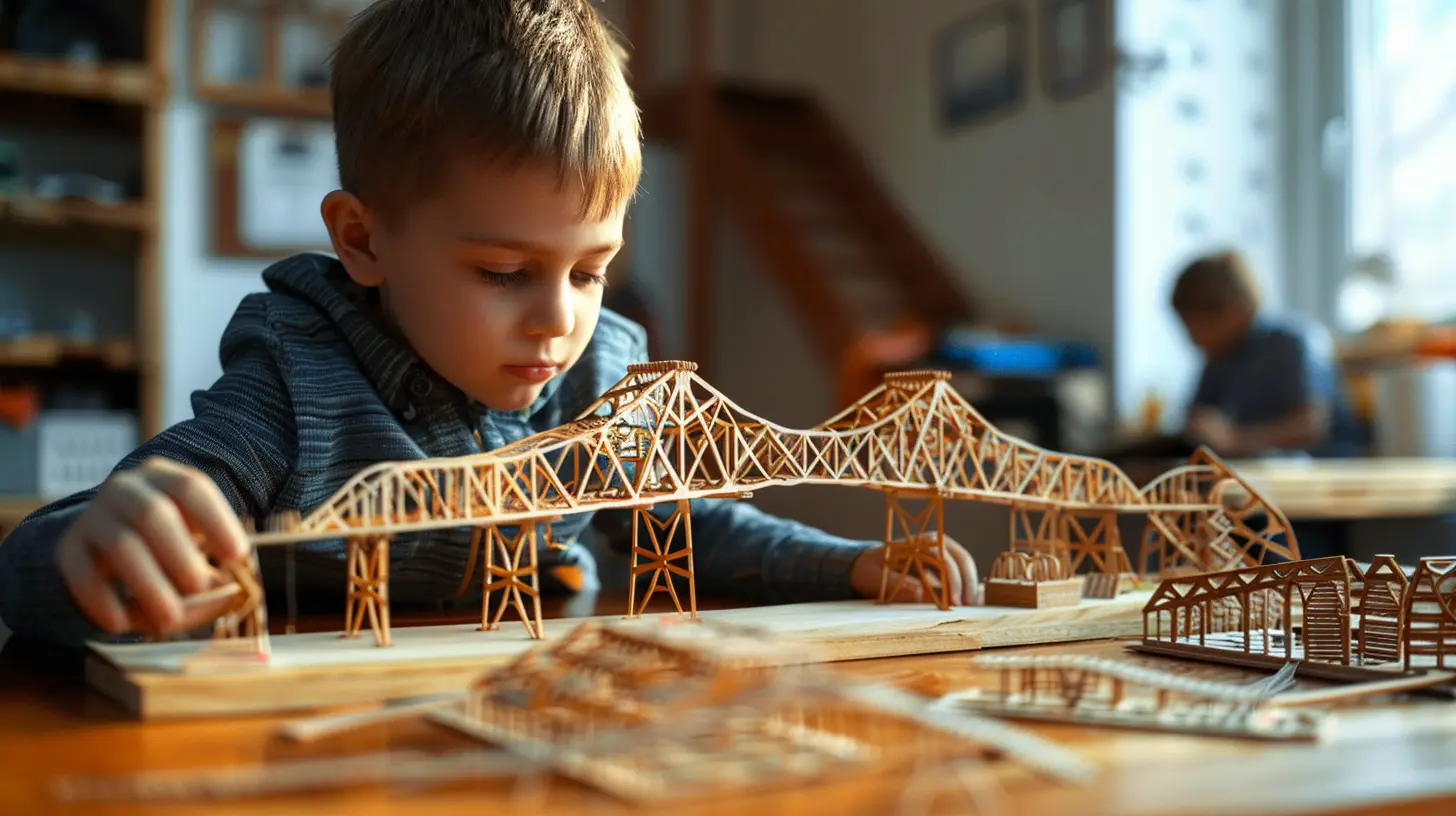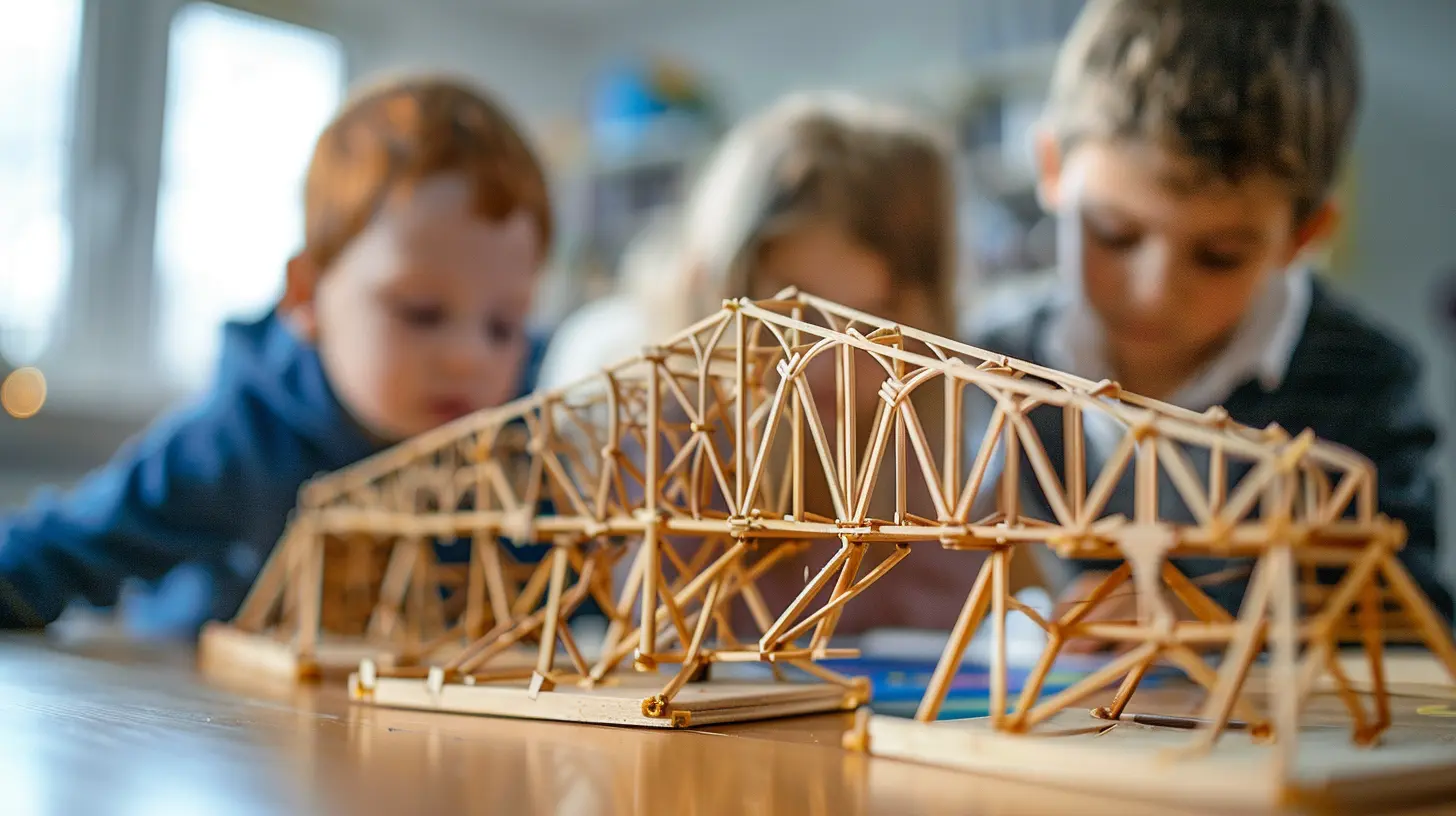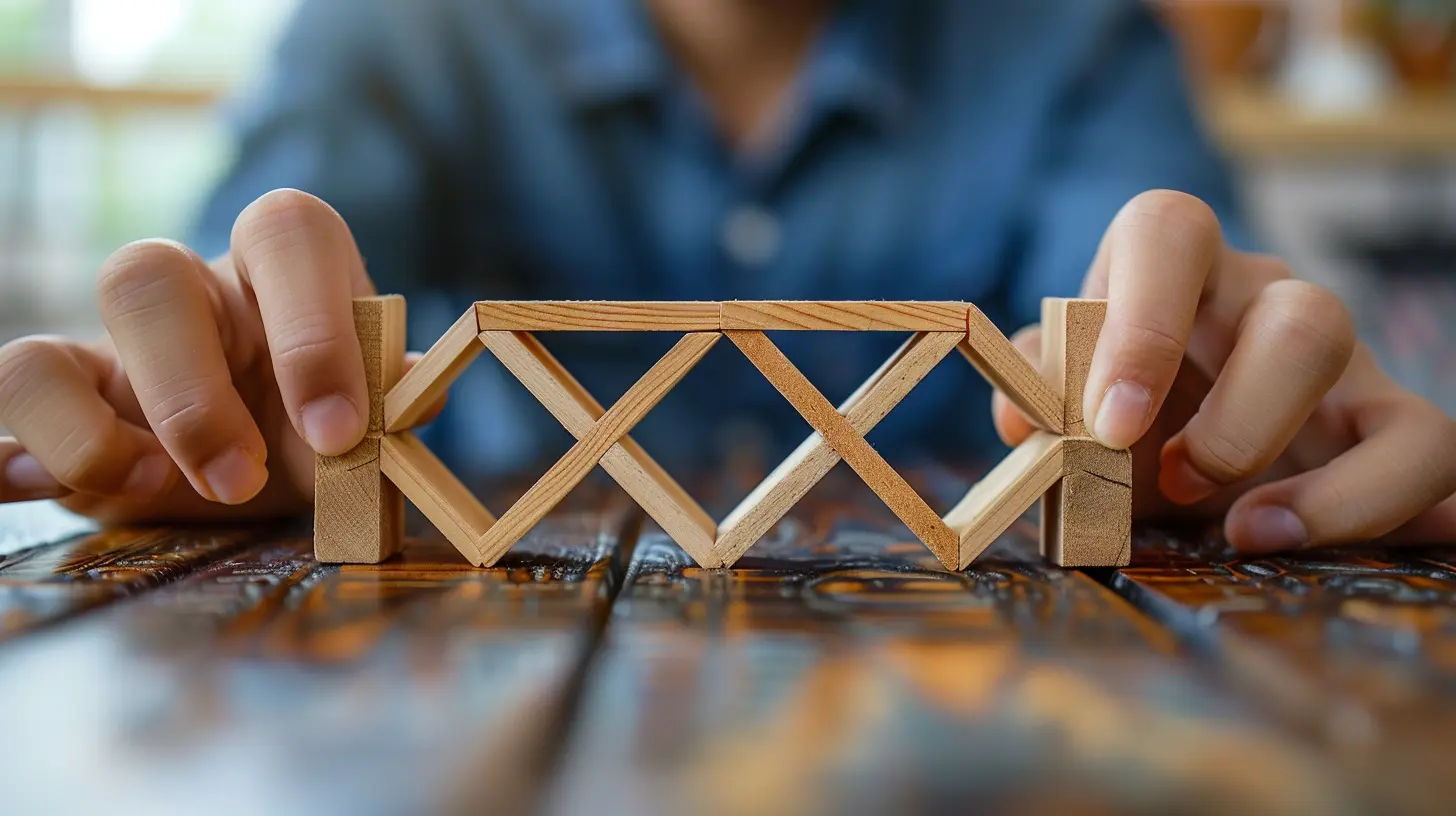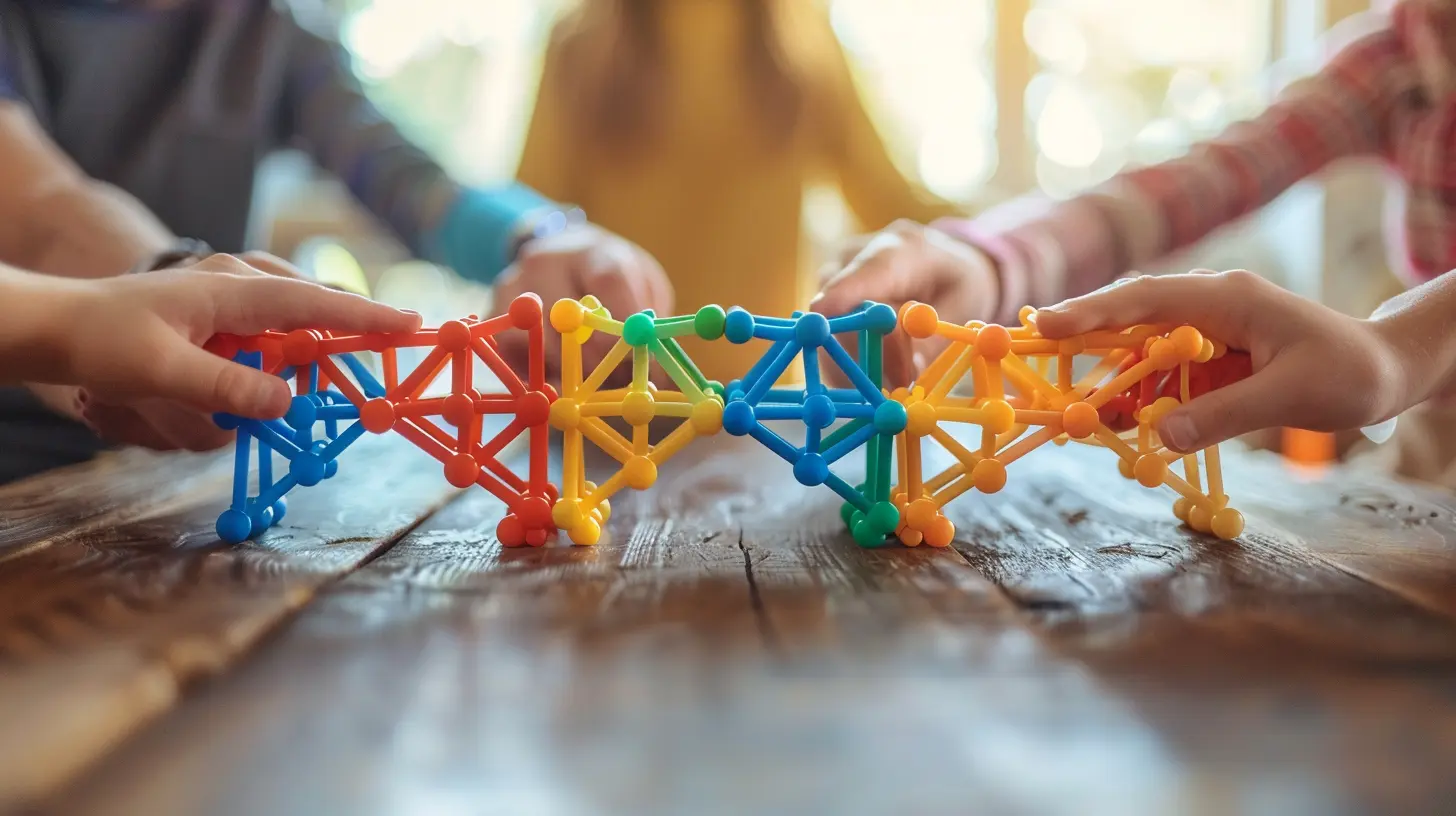Building Bridges: Exploring Engineering Principles through Hands-On Design
28 April 2025
Bridges are more than just connectors between two points—they symbolize innovation, resilience, and the marvels of engineering. Whether it's the towering Golden Gate Bridge or a simple wooden footbridge in a park, each structure tells a story of design, physics, and creativity. But have you ever wondered what goes into making these incredible structures strong, stable, and safe?
If you've got a knack for building things or you're just curious about engineering, diving into the mechanics of bridge design is a great way to explore structural principles. And the best way to truly understand these concepts? Hands-on experimentation!
In this article, we’ll break down the core engineering principles behind bridge construction and show how you can bring them to life with simple hands-on design projects. 
Why Bridges Matter in Engineering
Bridges have been around for thousands of years, dating back to ancient civilizations like the Romans and the Chinese. But modern bridges aren't just about getting from Point A to Point B. They're designed to withstand forces like gravity, wind, and even earthquakes.Every bridge is built with careful planning, considering factors like materials, distance, and potential stress points. From simple beam bridges to intricate suspension structures, there’s a lot to consider when designing a sturdy and reliable bridge.
But before we dive into designing, let’s cover some of the fundamental principles that determine how well a bridge will hold up. 
Key Engineering Principles in Bridge Design
Bridges may seem simple at first glance, but they rely on important physics and engineering concepts to stay upright and functional. Here are the core principles that every bridge follows:1. Forces and Loads
Bridges must handle multiple types of forces that push and pull on their structure. The main ones include:- Compression: A force that pushes materials together. Imagine squeezing a sponge—it gets shorter under pressure.
- Tension: A force that pulls materials apart. Think of pulling a rubber band—it stretches under strain.
- Shear: A force that tries to slide materials in opposite directions. Imagine holding a book and trying to move the top half forward while keeping the bottom half in place.
- Torsion: A twisting force that can occur due to wind or unbalanced loads.
A well-designed bridge balances these forces so nothing breaks or collapses under stress.
2. Material Strength
The materials you choose play a huge role in bridge stability. Engineers use materials like:- Steel: Strong and flexible, perfect for withstanding tension and compression.
- Concrete: Excellent in compression but weak in tension—it often needs reinforcement with steel rods.
- Wood: Lightweight and easy to work with, but not as durable as steel or concrete.
Choosing the right materials depends on factors like weather conditions, weight capacity, and cost.
3. Types of Bridges
Different bridge designs work better for different situations. Some common types include:- Beam Bridges: The simplest design, supported by strong horizontal beams. Think of a wooden plank over a stream.
- Arch Bridges: Use a curved design to distribute weight more evenly. The ancient Romans used this to build sturdy stone bridges.
- Suspension Bridges: Use cables to distribute weight, allowing for longer spans. The Golden Gate Bridge is a famous example.
- Truss Bridges: Use triangular shapes for extra strength. These are often seen in railway bridges.
Each design has strengths and weaknesses, so choosing the right one is crucial. 
Hands-On Bridge Design: Bring Engineering to Life
Enough of the theory—let’s build! Hands-on activities are the best way to grasp engineering principles. Here are some fun and simple bridge-building experiments you can try at home or in the classroom.1. Paper Bridge Challenge
Objective: Test how strong a simple piece of paper can be by altering its structure.Materials Needed:
- Sheets of paper
- Books or cups (as supports)
- Small weights (coins, paperclips, etc.)
Instructions:
1. Lay a flat piece of paper between two books or cups.
2. Slowly place small weights on top and see how much it can hold before collapsing.
3. Now, try the same experiment, but fold or roll the paper into different shapes (like a tube or accordion fold).
4. Observe how the strength changes based on design.
What You’ll Learn:
- Flat surfaces are weak, but adding folds or curves makes them much stronger.
- Engineers use this concept in real bridges to increase durability.
2. Spaghetti and Marshmallow Bridge
Objective: Build a bridge using weak materials and see which design holds the most weight.Materials Needed:
- Dry spaghetti
- Mini marshmallows (or gumdrops)
- A flat surface
- Small weights (coins, toy cars, etc.)
Instructions:
1. Use the spaghetti and marshmallows to create different types of bridges (beam, arch, truss).
2. Test their strength by placing small weights on top.
3. Adjust your design based on what holds up best.
What You’ll Learn:
- Triangles are one of the strongest structural shapes.
- Simple materials can mimic real engineering challenges.
3. Popsicle Stick Truss Bridge
Objective: Build a sturdy bridge using popsicle sticks and glue, applying truss bridge principles.Materials Needed:
- Popsicle sticks
- Glue (hot glue or wood glue)
- Ruler and pencil
- Small weights (toy cars or small books)
Instructions:
1. Sketch a blueprint of your bridge on paper.
2. Construct the base by lining up popsicle sticks.
3. Add triangular trusses on the sides for extra support.
4. Once dry, test how much weight it can hold.
What You’ll Learn:
- Truss designs distribute weight efficiently.
- Using a strong base helps prevent collapsing. 
Real-World Applications of Bridge Engineering
Bridge-building isn't just about fun experiments—it’s a real-world engineering challenge with important implications. Engineers must consider:- Environmental Impact: How will the bridge affect local wildlife, water flow, or weather conditions?
- Safety Regulations: Will the bridge stand strong against earthquakes, floods, or heavy loads?
- Cost and Materials: Are the materials cost-effective and long-lasting?
Even small design choices can make a huge difference when it comes to building safe and reliable bridges.
Final Thoughts: Why Hands-On Learning Matters
Studying bridges isn't just about memorizing facts—it's about seeing physics and engineering in action. Hands-on experimentation makes learning fun, engaging, and, most importantly, effective.By building models and testing different designs, you gain a deeper understanding of real engineering challenges. Who knows? Maybe today’s popsicle stick project will inspire tomorrow’s master bridge engineer!
So, grab some materials, start building, and see how strong your designs can be. The world of engineering is full of exciting possibilities, and it all starts with a simple bridge.
all images in this post were generated using AI tools
Category:
Science ExperimentsAuthor:

Bethany Hudson
Discussion
rate this article
6 comments
Robert McClain
Great article! The integration of hands-on design with engineering principles is essential for fostering creativity and problem-solving skills in students. Keep up the inspiring work!
May 12, 2025 at 7:36 PM

Bethany Hudson
Thank you for your kind words! I'm glad you enjoyed the article and recognize the importance of hands-on design in education.
Ellie Potter
In the realm where dreams take flight, Engineering whispers, hands ignite. Bridges of thought and craft entwine, Minds unleashed, where visions shine. Through design's embrace, we'll explore, Creating wonders, forevermore. A journey of learning to adore.
May 6, 2025 at 2:23 AM

Bethany Hudson
Thank you for your poetic insights! You beautifully capture the essence of creativity and exploration in engineering.
Naomi Oliver
What a fantastic journey into the world of engineering! "Building Bridges" not only sparks our creativity but also empowers us to think critically and collaboratively. Hands-on design makes learning fun and engaging! Let’s embrace these principles and build our own bridges—both literally and metaphorically! Keep inspiring us! 🌟🚀
May 5, 2025 at 10:46 AM

Bethany Hudson
Thank you for your wonderful feedback! I'm thrilled to hear that "Building Bridges" resonates with you. Let's continue to inspire creativity and critical thinking in engineering together! 🌉✨
Ziva Rodriguez
Hands-on design is where theory meets creativity! This article brilliantly underscores how engineering principles come alive when students build, innovate, and connect. It's a reminder that learning isn’t just in textbooks; it’s in the excitement of creating something real.
May 2, 2025 at 3:50 AM

Bethany Hudson
Thank you! I'm glad you found the article highlights the vital connection between theory and creativity in engineering. Engaging hands-on design truly makes learning come alive!
Vincent McCoy
This article effectively highlights the importance of hands-on design in teaching engineering principles. By fostering practical skills and critical thinking, students can deepen their understanding of complex concepts. Engaging in real-world projects not only enhances learning but also prepares future engineers for innovative problem-solving in their careers.
April 30, 2025 at 7:06 PM

Bethany Hudson
Thank you for your insightful comment! I'm glad the article resonated with you and emphasizes the value of hands-on design in engineering education.
Imani McAllister
This article beautifully highlights the importance of hands-on learning in engineering. By fostering creativity and problem-solving, we can inspire the next generation of innovators. Thank you for sharing such valuable insights and encouraging exploration in education!
April 29, 2025 at 3:44 AM

Bethany Hudson
Thank you for your kind words! I'm glad you found the article valuable and inspiring for future innovators. Hands-on learning truly makes a difference in engineering education!
MORE POSTS

Understanding the Concept of Infinity: Bringing Big Ideas to Life

Learning English Through Storytelling: A Fun Approach for ESL Learners

Learning English Through Social Media: Tips and Suggestions

How to Develop a Personalized Math Learning Plan for Every Student

Building Effective Study Habits for University Success